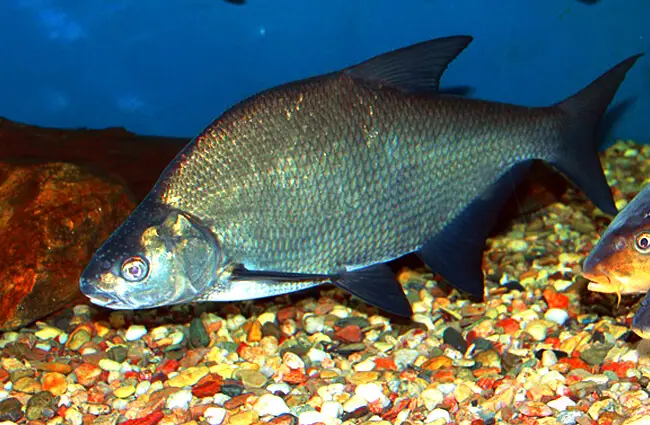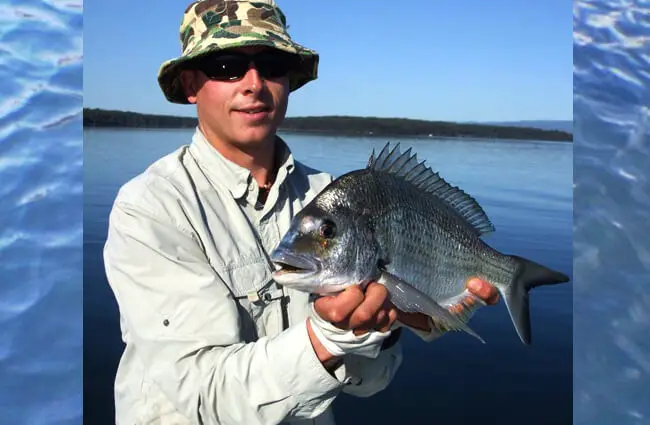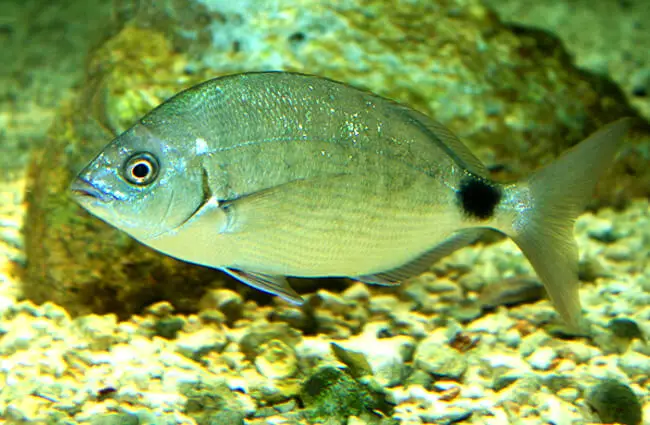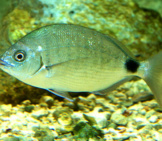People refer to several different species of fish as a “Bream.” Researchers place most of those species in the Cyprinidae family. When most refer to this fish, they mean the common species Abramis brama. For this reason, this article will focus primarily on A. brama, the common Bream. Read on to learn about the Bream.
Description of the Bream
This fish has silver colored scales and a deep body shape. Its body is also laterally compressed, which means that it is long and tall, but quite narrow. Additionally, the fins on this species have a translucent quality to them.
Most individuals measure about a foot or two long, though some grow slightly larger. On average, they weigh between five and eight pounds.
Interesting Facts About the Bream
This fish has several different features and adaptations that help it survive. Learn what makes it unique, below.
- All in the Family – Scientists group this fish into the Cyprinidae family. This family contains the various carp species and the minnows.
- Mighty Minnow – Minnows are small… right? Think again! This relatively large species is actually a minnow! Researchers place it in the minnow subfamily, also known as the Leuciscinae subfamily.
- Bronze Scales – Though most of the time these fish have silver colored scales, animals in some areas differ from the norm. As they age, sometimes this species develops a deep bronze color to its scales.
- Filter Feeding – While they are smaller, these fish can use their gills to filter feed for microorganisms if food is scarce. However, as they grow larger their gills become too separated from one another to trap the plankton.
Habitat of the Bream
Most of the time, these fish live in freshwater habitats. However, they do range into brackish water on occasion, or areas with mixed salt and freshwater. For the most part, they prefer living in rivers, large streams, wetlands, or ponds. They often live in muddy or turbid waters with lots of floating sediment and algae.
Distribution of the Bream
You can find this fish throughout much of Europe. They range from France to Norway, Sweden, and Finland. The easternmost extent of their natural range reaches the Ural Mountains, western Kazakhstan, Uzbekistan, and Turkmenistan. Introduced populations also live in southern Russia and into Mongolia.
Diet of the Bream
Though these fish are mostly carnivorous, they feed primarily on invertebrates. As juveniles, they use filter feeding to eat microorganisms, like plankton and larvae.
Adults often forage along the bottom, digging insect larvae and worms out of the mud. They also feed on mollusks and sometimes eat underwater vegetation.
Bream and Human Interaction
People typically do not eat this fish species. However, they do catch them for sport. Fishermen can use just about any bait to catch them. This activity does not impact the overall population numbers of these fish, and the IUCN lists the species as Least Concern.
Domestication
Humans have not domesticated this species in any way.
Does the Bream Make a Good Pet
No, these fish do not make good pets. They reach lengths that are too large to house in a home aquarium.
Bream Care
People do not generally house these fish in aquariums. Regardless, they are quite hardy and survive easily in most freshwater settings. They feed on invertebrates, and generally eat worms or commercially produced fish food.
Behavior of the Bream
These fish are social and gregarious. They live in groups known as schools, and multiple schools congregate during the winter months. Schools spend their time foraging along the bottom of a body of water, often close to the shore. They dig through the sediment to find prey.
Reproduction of the Bream
During the months of April, May, and June, this fish breed via spawning. While spawning, fish release their eggs and sperm and fertilization occurs outside of the body. The males defend territories, and the females choose the males with the best territories.
Females lay between 1 and 300,000 eggs! It takes about a week for the eggs to hatch and the young fish, known as fry, to emerge. The parents do not care for the eggs or young in any way.













![Red Angus Closeup of a beautiful Red Angus cowPhoto by: U.S. Department of Agriculture [pubic domain]https://creativecommons.org/licenses/by/2.0/](https://animals.net/wp-content/uploads/2020/03/Red-Angus-4-238x178.jpg)












![Red Angus Closeup of a beautiful Red Angus cowPhoto by: U.S. Department of Agriculture [pubic domain]https://creativecommons.org/licenses/by/2.0/](https://animals.net/wp-content/uploads/2020/03/Red-Angus-4-100x75.jpg)

